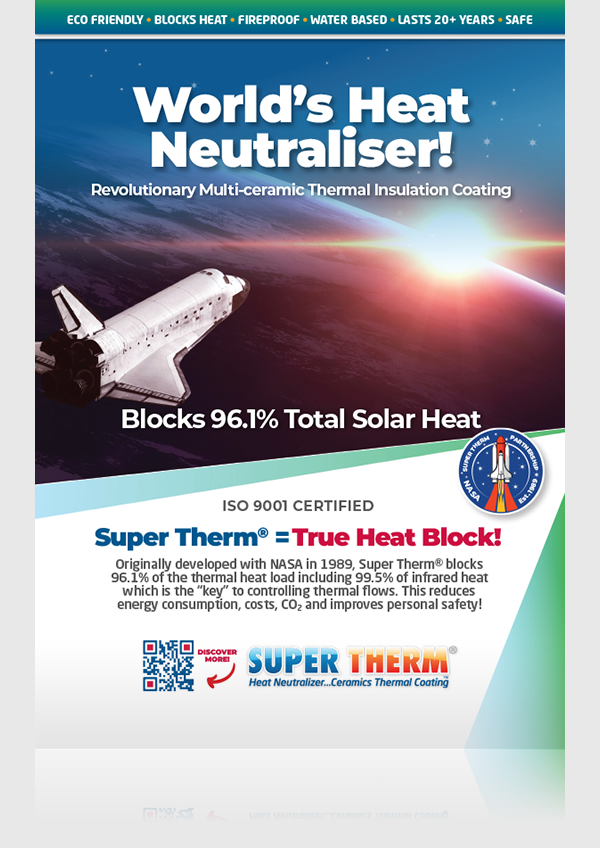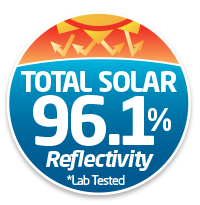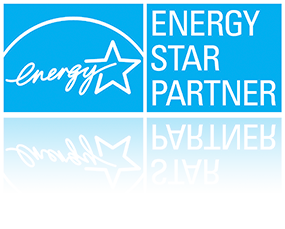Insulation Coatings that Cool Flat Roofs
Finally you can keep flat roofs cool passively!
Did you know flat roofs absorb virtually 100% of the solar heat. This is bad in summer. Because of their low pitch they are exposed to the sun all day. Generally there’s no roof space so heat is prone to being trapped and the insulation absorbs and eventually transfers all the heat inside the home…making living spaces unbearable.
Once Super Therm Insulation Coating was applied to this roof finally the owners could live in this part of the house in summer with no air conditioning running. Passive transformation of living spaces!
Comments from a My Efficient Electric Home Facebook forum
Commonly we find that there’s uncertainty about flat roofs and how to insulate:
Looking for some guidance. Beginner here on flat metal roof. Have been upgrading my own home but it is very different in construct. I have an investment property with a flat roof (1 degree). About to completely re-roof with new klip-lok colourbond roof. Going with shale grey. I like to think of myself as a nice landlord so I want there to be adequate insulation added. No ceiling ventilation either. Builder has recommended the standard 55mm building blanket though i feel this will do nothing. Western Sydney based so hot in summer & cold in winter. Any recommendations would be appreciated.
Roof space
You want to know what’s under the roof, is there a roof space, or how much space/framing between metal and ceiling plaster? Ideally, a roof will have the roof sheeting, under that a vapour permeable wrap (which acts as a secondary water barrier too), and bulk insulation below that, whilst fitting around trusses or beams, and above plaster. Anticon blankets aren’t usually that thick so won’t provide much R value. A roof should probably have at least R4 in Sydney, maybe even up to R6 would be good! I’d suggest working out how much space you have to work with, this may impact the product choice.
Dark colours
I don’t know how dark shale grey is but lighter colours are more reflective and therefore don’t build up as much heat which will help with the insulation. It’s the lightest grey you can get. I’ve seen it on rooves before and it almost looks white in some instances. Hoping that will help with heat.
Thermal Bridging and Condensation
Don’t use metal roof battens. They would add thermal bridges through the roof blanket. It sounds like space for insulation in the roof is limited, so rigid foam boards for most of it with bats in the tighter gaps might be the way to go. Carefully calculate how to manage condensation risks too.
Insulation
R 1.3 to R 1.5 blank will fit no problem. Is there ceiling insulation already? Have a look at this roof blanket and ceiling insulation actually don’t add up 1.1 is a beneficial effect. R3.5 ceiling and R1.3 roof blanket is actually…. R5 8 total… gaining a whole extra R value…
Full overhaul
We have the same type of roof in Melbourne. Firstly – roof blanket isn’t insulation it is for condensation control. Secondly – with these roofs – because access is impossible without removing the roof you only get one shot at doing it right. Thirdly – they are an unventilated roof type – so every effort needs to be made to exclude moisture getting in to the insulation from inside and outside. At our place R5 polyester batts were put between the rafters, then plywood, then a waterproof but breathable membrane, taped and flashed to the gutters, then battens and counter battens to make a path for condensation to drain, then the roof deck. The build up is deeper than the original roof – so a clever angled flashing detail conceals this. From the inside you need to have no ceiling penetrations in the plaster and all extraction fans ducted directly to the outside. We also took the opportunity to pump in wall insulation (silicone coated fibreglass product) while the roof was off.
Ventilation
We did the same thing last year in Shale Grey, similar roof pitch (actually it had zero, we had to increase it to 2⁰ by re-battening the whole thing). Anyway we just installed as much HD Wall Batts as we could in the ceiling (they have the best thickness to R-value ratio), then a vapour permeable membrane on top of the battens, then Proctor Drainage Battens on top, installed the KlipLok brackets on top of that, then installed the KlipLok. We went with the theory that the Drainage Battens would allow air to flow above the VPM, there would be airflow between the insulation and VPM, so humidity should be well controlled. If ventilation is an issue, one can install some venting in the eaves to allow for cross flow (just install on the prevailing wind side and the other side to allow for airflow).
Solution
Alternatively you could look at a insulation coating and insulation combined. Unfortunately Shale Grey has a solar absorption of 44%. Western Sydney is very much an epicentre for reducing urban heat island in the region by your local Governments and researchers. We applied our coating (commercial interest) Super Therm to a range of roofs including cathedral roofs and flat roofs and blocked 96.1% of the total solar heat. The owners kept the existing insulation in place and it finally made the spaces liveable with minimal impact. Most people will have complex and expensive rebuild strategies with the right intention but if you’re looking for a passive solution that is efficient and prepared to think outside the box there’s other options.
Why we can say this, well it’s used on buses, trucks, trains, caravans, containers and RV’s which have much thinner roofs than homes so it’s like they’re under a shady tree.

























